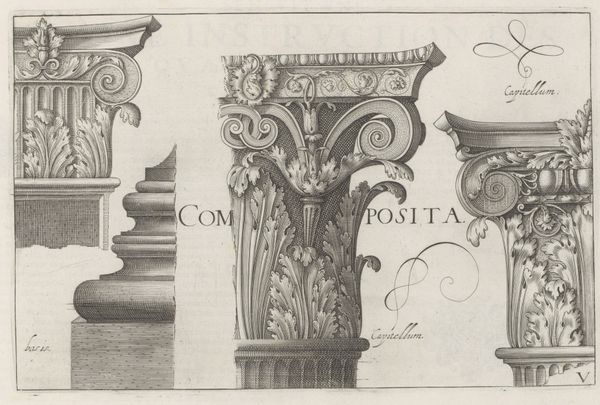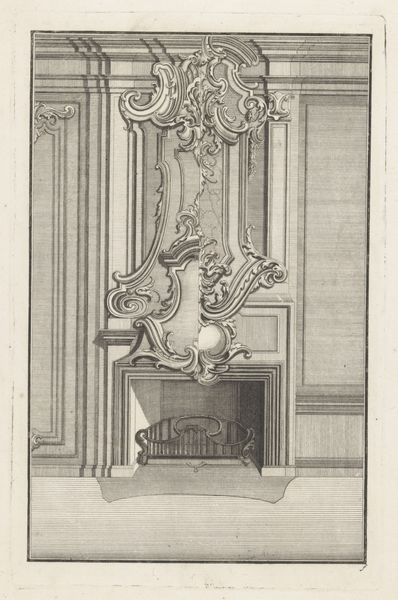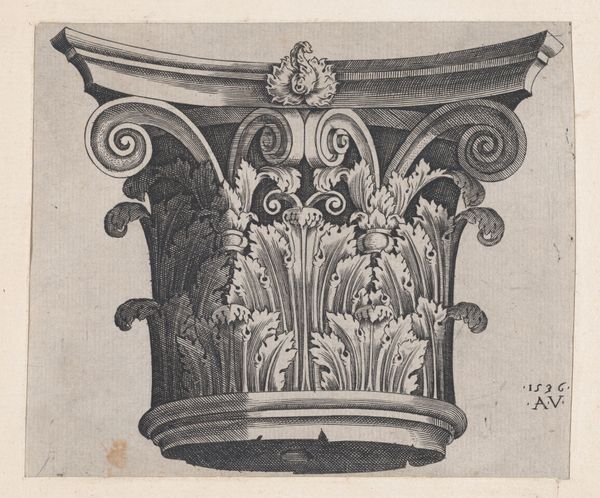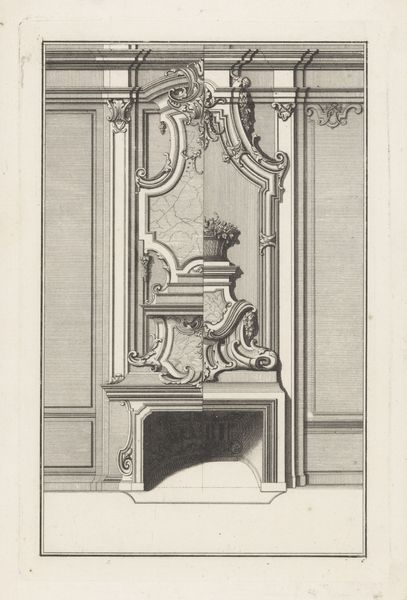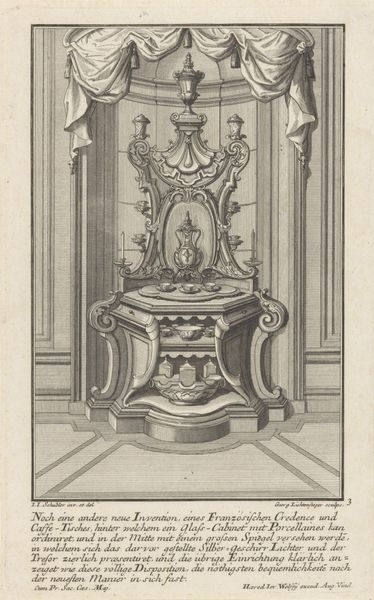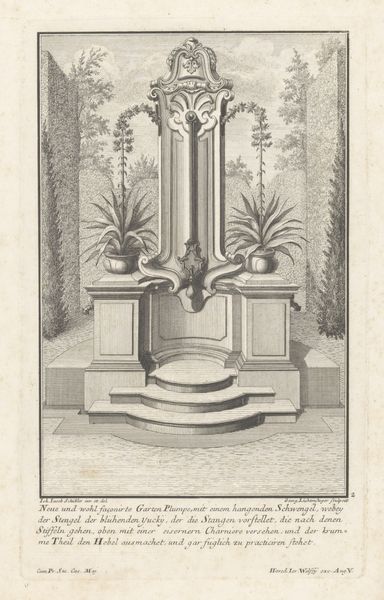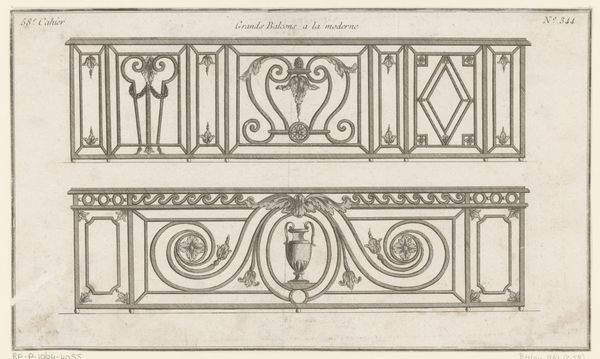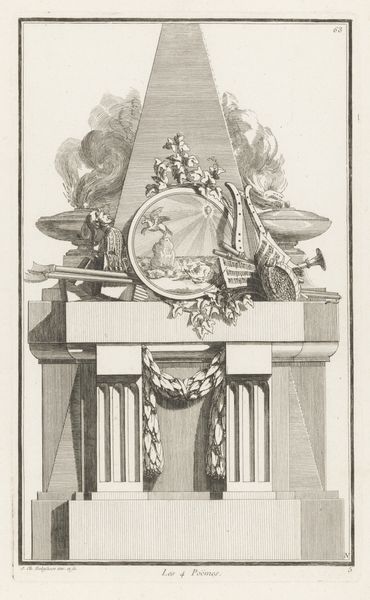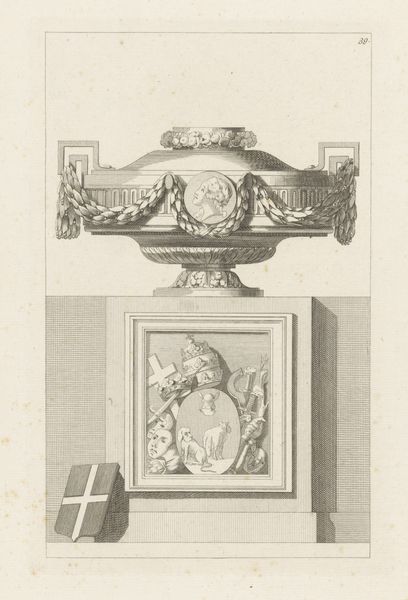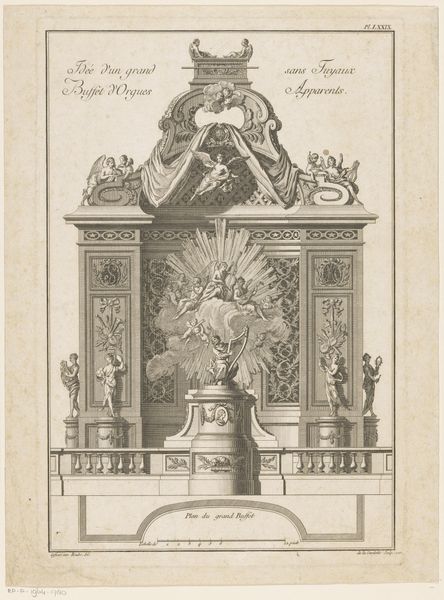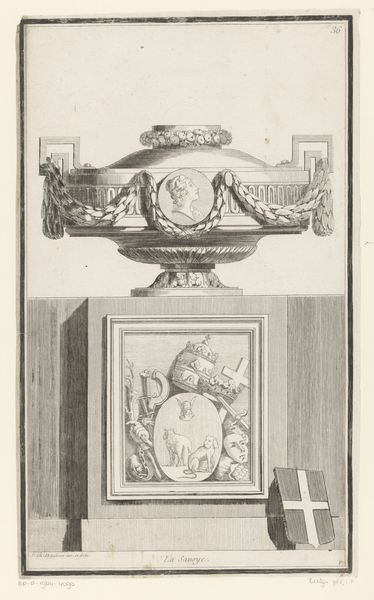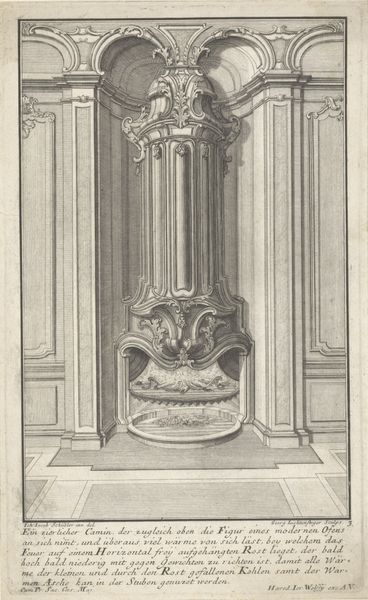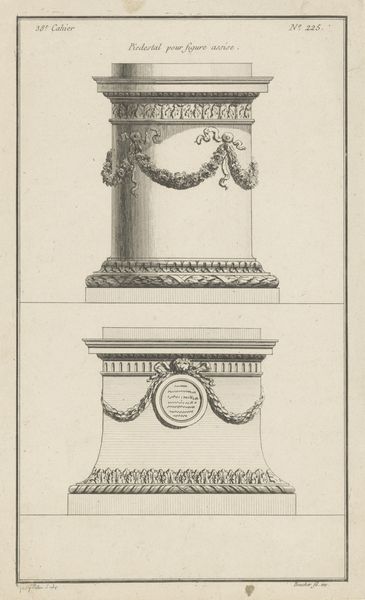
print, engraving, architecture
#
aged paper
#
toned paper
#
light pencil work
#
quirky sketch
#
baroque
# print
#
pencil sketch
#
old engraving style
#
sketch book
#
personal sketchbook
#
geometric
#
pen-ink sketch
#
line
#
sketchbook drawing
#
engraving
#
architecture
Dimensions: height 186 mm, width 284 mm
Copyright: Rijks Museum: Open Domain
This is Hendrick Hondius’s etching of a Corinthian capital and basement, made around the turn of the 17th century. The Corinthian order, easily recognized by its elaborate capital adorned with acanthus leaves, evokes a sense of sophistication and ornamental richness. The acanthus motif, rooted in ancient Greek architecture, first appeared in temples and monuments, symbolizing growth, life, and artistic refinement. Think of the Roman temple of Vesta in Tivoli; its columns are adorned with acanthus leaves, expressing harmony and elegance. Over time, the symbolic essence of the acanthus evolved, yet its fundamental association with classical ideals remained. It's interesting to note how this motif resurfaces, for example, in Renaissance art, reflecting a renewed interest in classical antiquity, or in later neoclassical movements, signifying the power and the glory of empires past. The image bears the weight of cultural memory, evoking an echo of bygone eras. It’s more than just an aesthetic representation; it is a non-linear, cyclical progression, resurfacing, evolving, and taking on new meanings in different historical contexts.
Comments
No comments
Be the first to comment and join the conversation on the ultimate creative platform.
